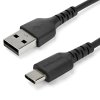Jean-Paul Petrosyan
Member
- Joined
- Jul 16, 2023
- Messages
- 50
- Likes
- 28
Oh, thank you very much!Hi
I just performed a quick measurement on mine
Set for 15.5 ohm load, USB source
11 o'clock on medium gain gives me approx 40 mVrms (1kHz)
That gives me a whopping 99dB SNR
(In line with what I measured for L30 II at 50mV)
For same 40mV output on Low gain, I get the exact same 99dB SNR.
This is to be expected, given G5 specs for preamp:
View attachment 378746
Noise level is given as identical for Low and Mid gain.
(L and M specs figures are identical for L30 II, by the way)
(those figures should translate into SNR > 100dB at 40mV - I measured 99dB)
So the answer to you question is "NO"
Shoot, does that mean that I'm listening at loudness levels around 90 dB @ 1 kHz? That's... A bit scary. I hope it's just me misinterpreting the data due to a lack of understanding. I know I have some hearing loss, but I was hoping it's not that bad
Could you tell why one should look at the specs for preamp/LINE IN section instead of those from USB IN section?
No need to bother yourself if that requires lengthy explanation, you've already done so much to help!
Thank you.
Attachments
Last edited:




